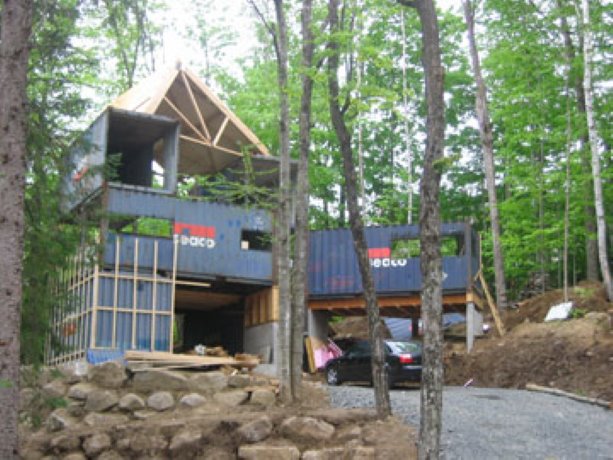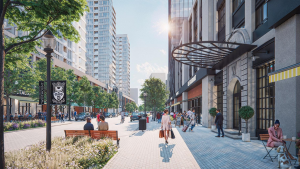Ocean shipping containers are being used by several companies in B.C. and Quebec for the construction of environmentally friendly portable or permanent buildings.
Modular construction
Ocean shipping containers are being used by several companies in B.C. and Quebec for the construction of environmentally friendly portable or permanent buildings.
Shipping containers, which are the same size everywhere in the world, are designed to carry and support heavy loads when stacked in high columns.
In this capacity, they can provide modular elements that can be combined into larger structures.
Coquitlam, B.C.-based Ocean Trailer provides custom modifications of containers and manufactures multi-purpose portable buildings using ISO standard steel containers.
‘We are in the truck chassis and container business, but we sell and rent containers to the construction, movie and transportation industries,” said Darryl Chafe, salesman with Ocean Trailer.
“For the Port Mann bridge project Kiewit and FlatIron are ordering containers that will be modified into offices, lunchrooms and tool cribs. We just provided a container for NBC Sports for an office for their Olympic games coverage.”
Chafe said Ocean Trailer is also looking at multiple containers for a portable warehouse for the Olympics. The warehouse will include 50 containers and will be 23 feet tall.
“The biggest advantage of using a container versus a regular office trailer is that they are easier to load and offload,” he explained.
“Containers don’t need a foundation and can lay right on the ground. Containers are much more durable. The regular trailer is made of sticks and stones, but a container is made of steel and has a 30 ton load capacity.”
According to Chafe, a regular trailer at the Olympics could collapse under the snow load, but a container can support a heavier load.
In the movie industry, Ocean Trailer has provided containers for studios and first aid rooms.
Jocelyne Labelle and Bernard Morin established Quebec-based Maison Idekit Home two years ago to plan and build a range of buildings from shipping containers.
“There is no limit to building structures with shipping containers,” said Labelle.
“If it is built to standard, it does not matter. We started with residential buildings, but we could do an office, library or commercial building.”
The Montreal couple built their dream home from seven shipping containers in 2007 in Ste. Adele.
“After we developed the concept, we tried to use it on our own home,” said Labelle.
“This was our prototype.”
Morin, who is an architect, arranged the containers in an unconventional Cubist design, with some stacked upright, others on their sides or stacked on top of each other. It is the first home of it’s kind in Quebec.
“We started the company because we wanted to build houses differently,” said Labelle.
“We are aware of the fact we have to change the way we build houses, by using less wood and other natural products.”
Initially, Labelle and Morin planned to spend about $400,000 to build their 3,000-square-foot three-bedroom home out of wood. Instead, the couple decided to use the eco-friendly alternative for about $175,000.
Morin first dreamed about building houses from containers 25 years ago when he was a student.
He wanted to use containers to ship goods to northern Canada and modify them for housing.
At the time, the idea was not very popular.
Today, with the environmental movement gaining strength, the idea has become a lot more feasible.
Maison Idekit Home sells prefabricated shipping container kits that are delivered to the site complete with wiring, plumbing, windows, doors, telephone jacks, sinks and cabinets.
The homes are covered with soy-based urethane insulation and finished in wood.
They can even be designed with a green roof. For this reason, they don’t look like a container.
The company, which has about 10 employees, can build a home for about $100 a square foot and is currently working on a pair of new homes.
Another Montreal entrepreneur, Daniel Noiseux, has opened a mobile restaurant built from a modified container.
He produced a prototype named the MuvBox, that he is marketing to entrepreneurs, who want a mobile business.
The MuvBox looks like a shipping container when closed, but it can be transformed into a small open-air diner with the press of a button.
The container comes complete with tables on a patio made from the side of the container and folds out automatically.
The patio is covered with awnings for shade and there is a fully functional stainless steel kitchen.
Solar panels on the roof provide 30 to 40 per cent of energy needs.
The MuvBox could also serve as a travelling retail outlet, bistro or demonstration unit.
The base price of a MuvBox, which includes transformation of the container, lighting, flooring and exterior design, is $150,000.











Recent Comments
comments for this post are closed